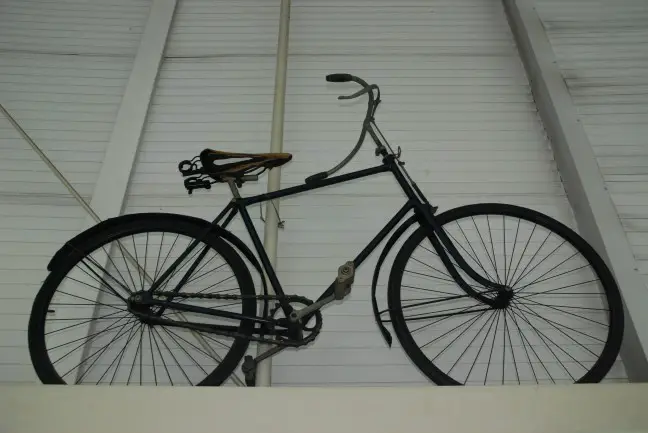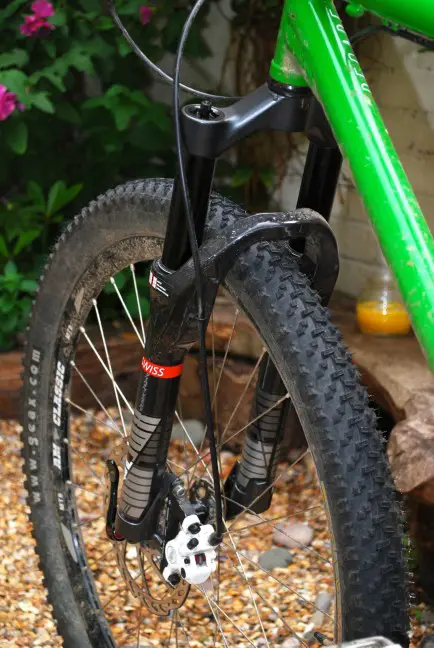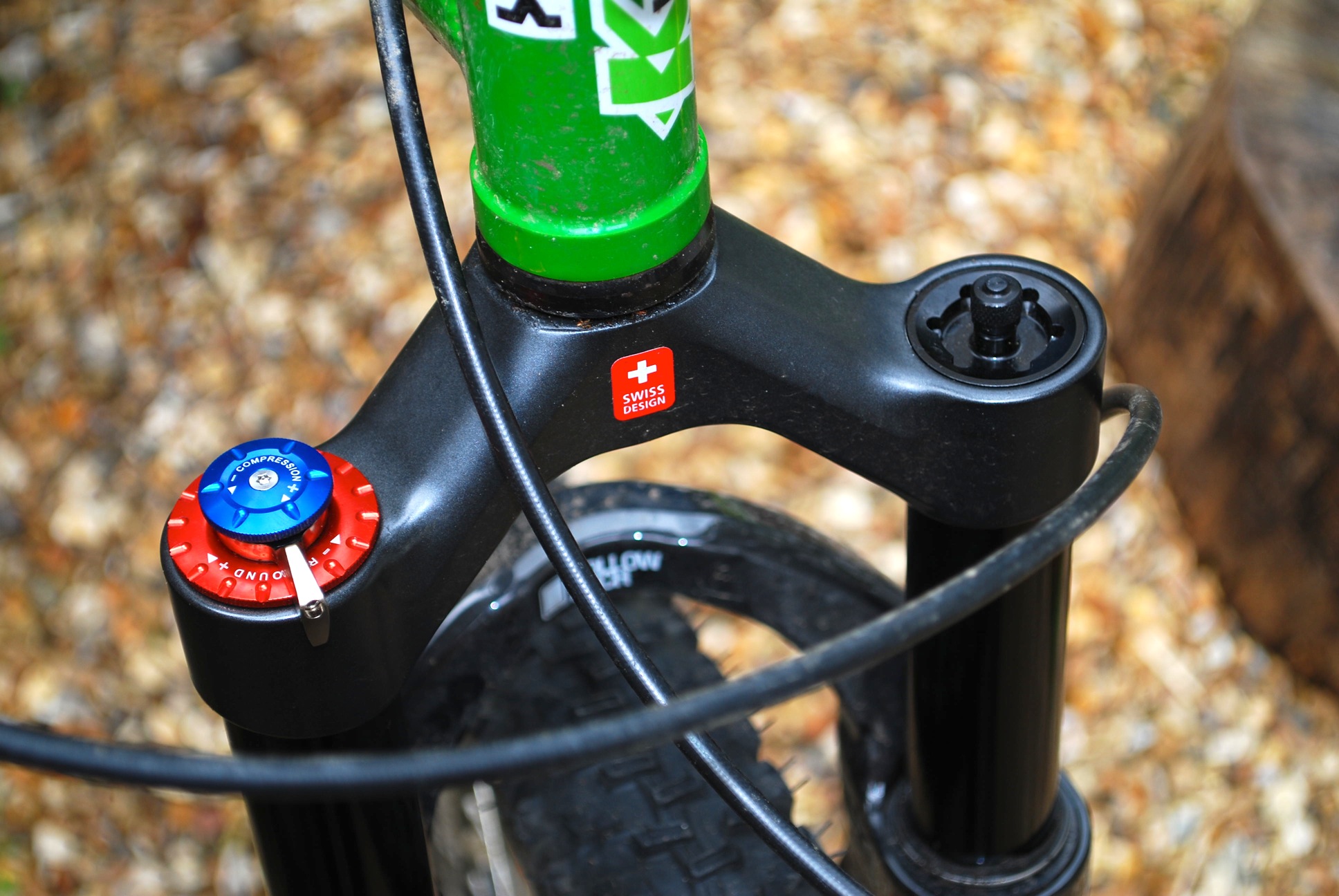DT Swiss XMC100
Price: £799
From: Madison www.madison.co.uk
Weight: 1560g / 3.44lbs
This fork arrived too late for inclusion in Singletrack Mountain Bike Magazine issue 58’s XC fork group test. So here it is online as promised…

The Detail
DT Swiss purchased the suspension fork design from Pace a couple of years ago now. And since then the forks had basically been the same product but with different decals and stuff. For 2010 the forks bearing DT Swiss’ name are now vastly different internally to the previous Pace forks. The external adjustment dials are also different.
The fork crown and the fork lowers are still very much the Pace design. The main reason DT Swiss purchased the fork designs was because they very much admired the lowers of Pace forks – and the patented “hollow arch” brace. DT Swiss claim that the design of the fork lowers means their forks have the best stiffness-to-weight rating on the market. Some rival forks are torsionally stiffer but they’re heavier. Stiffness combined with weight is what DT Swiss are interested in. Their testing is done with a wheel in the fork by the way (some people assume that it isn’t).
Inside the fork, the new design has the pump piston integrated into the 32mm stanchions. One claimed benefit of this is better heat dissipation through the stanchions. It also enables a lighter weight fork. Another added benefit is that it places the weight in an unsprung place (much like the FIT cartridge on Fox forks does), this basically means that the stuff that needs to move up and move down (ie. the fork lowers) is lighter and thus easier to move. Physics an’ that innit. The lowers are hand layered carbon fibre so ain’t exactly porky anyway.
The damping system of the XMC100 is called “Twin Shot”. Twin Shot damping is explained by DT engineers as being like “BMW Sports Mode”. Firm and racey damping in other words. It was designed with a lot of input from XC/Marathon racers on the Scott Racing team and fast folks like Thomas Frischknecht. All the adjustments are positioned on top of the fork legs so everything tweaky is within reach whilst riding.
Damping adjustments available: rebound, low speed compression. There are dedicated circuits for high speed compression and high speed rebound but these are factory preset and non-adjustable.
An attractive aspect of the Twin Shot system is the two step lockout lever (well, it’s actually has three steps if you count “off” as a setting). When the lever is turned one click clockwise the fork is in “lock down” mode (the fork sits approx 1/3 compressed). When the lever is turned another click clockwise the fork is fully locked out; you can lock the fork out in either its 1/3 compressed “locked down” position or (if you turn the lever all the way quick enough) the fork can be locked out at full extension. [A remote lever can be retro-fitted for doing all this from the handlebar]
A piston pushes oil into a rubber bladder-sealed chamber at the top of the fork. Oil does not pass through the piston head. Lubrication oil and damping oil are two separate entities that do not mix. A relatively small volume of oil is required for the Twin Shot system. All air in the system is under pressure (the pressure in the rubber bladder is factory-set to 5 bar) so it does not mix with any oil and cause foamy “cavitation” problems.
Another acronym feature that the XMC100 sports is “ABS”. This stands for Auto Balancing Spring system. This is “self setting positive and negative air chambers” – one Schraeder valve (on top of the fork leg) does both. When the fork is in its fully extended position an inter-chamber valve is fully open, so the pressure is the same in both positive and negative chambers. This valve closes as soon as the fork begins to compress (when the fork compresses about 2mm to be exact) and from this point (as the fork compresses) the negative pressure drops and the positive pressure increases. It should make for a consistent feel to the fork action throughout its stroke.
The fork comes with a recommended 200 hour service interval.

The Ride
From the first “out of thebox” ride on these forks it was clear that they are significantly different to the forks from the Pace era. They were much plusher (sorry, but that does seem to be the most appropriate word here). Very little stiction – or noticeable breakaway friction from a settled position. They were also quite firm feeling, not in the sense of having too much air pressure in them, more in a damping sense. For such a supple low-stiction fork they were also very stable under rider movement (ie. not “bobby”) even with minimal low speed compression dialled in. We were impressed.
The more we rode the XMC100 the more impressed we became. The chassis stiffness was good. It’s hard to tell that much (accurately) about torsional stiffness without a fancy machine but suffice to say the forks certainly went where we wanted them too and didn’t flinch at being ridden as hard as possible over rough stuff and around tight, slingshot bends. It is easier to assess fore-aft stiffness under braking and here again the XMC100 forks were impressive. Not much flex or twang at all. And with a few clicks of low speed compression, brake-induced fork dive was kept at bay. Leaving a very punchy, accurate and capable fork to work with.
We didn’t feel limited by having “only” 100mm of travel. The forks punched well above their weight. The forks took big hits very well; no spiking, deflection or unpredictable rebound. The great thing about how the XMC100 forks behaved was the suppleness of the initial travel (which helped a lot in finding traction on slippery surfaces as well as comfort) combined with the firm feeling of the damping throughout the stroke (which made for a very responsive, accurate handling fork that could also be “pushed into” loose terrain to find traction). The rear arch has plenty of tyre clearance so it is possible to run fat tyres as well; you aren’t limited to XC rubber, you can fit some big ol’ brutes in there.
The damping adjustment on offer was broad and useful for a variety of rider weights and riding styles. All the adjustment dials were easy to use and very positive in action. The two step lock-down/lock-out lever was nicely intuitive to use. Although in truth we didn’t use it that much beyond a few “I suppose we should see how this works” arbitrary occasions. The damping was bob-free as it was. On a suitable frame a 100mm travel fork doesn’t really need reducing in length that much either. But if you have some prolonged tarmac bashing to do on your ride then you’ll be pleased to know that the two step lock-down/lock-down does do what it says on the tin.

Overall: At nearly £800 these forks should be good. Actually at nearly £800 these forks should be flawless. And we’re tempted to say that they are. The only thing that’s holding us back from saying such a thing is that we want see how they perform over 200 hours of riding. We will be reporting later on in the year with our experience. In the meantime we can definitely say that for the six weeks that we’ve been riding the XMC100 they have been brilliant. Firm for power delivery and responsive handling. Nicely cushy for the small stuff. Stiff and capable on the rough stuff. A great fork. DT Swiss’ first attempt at a fully DT Swiss no-compromise fork is a winner.
Review Info
| Brand: | |
| Product: | |
| From: | |
| Price: | |
| Tested: | by for |
Comments (0)
Leave Reply
Post Comment


there rear shox are also jsut as good .nice review
The stanchions are the sprung bit – the unsprung bit are the lowers and wheel – but correct, reducing unsprung weight is desirable.
I’d like to replace my RC38 LTs with them, but at £800 that won’t be happening.
The Detail
DT Swiss purchased the zzzzzzzzzzz…..
Why have DT swiss ditched the adjustable travel fork designs?